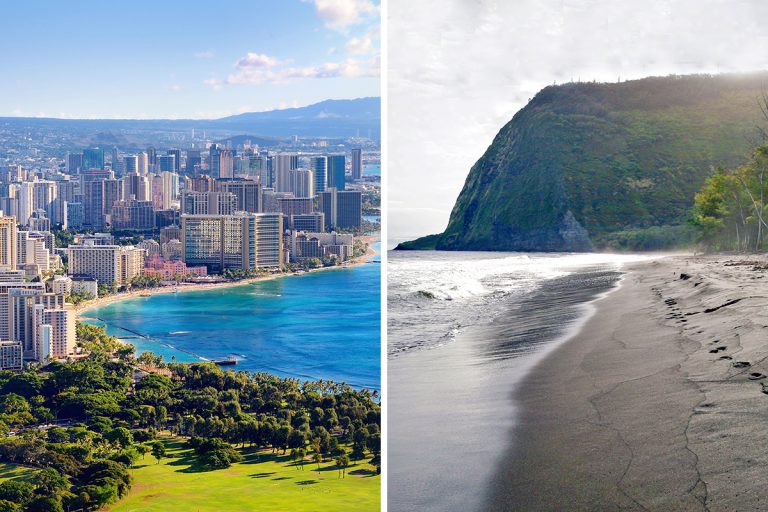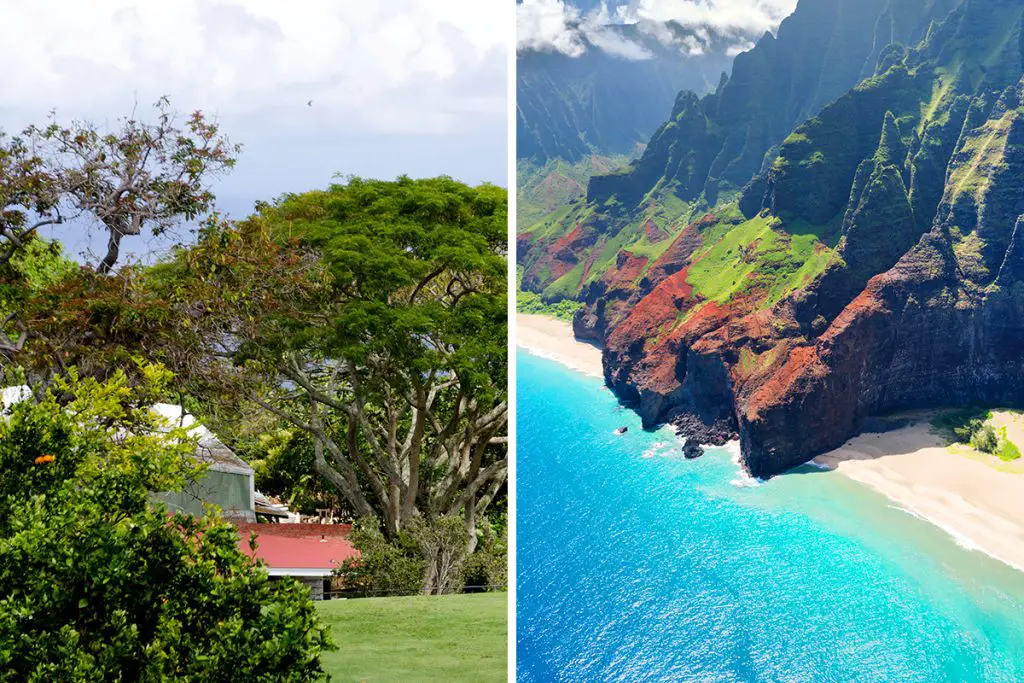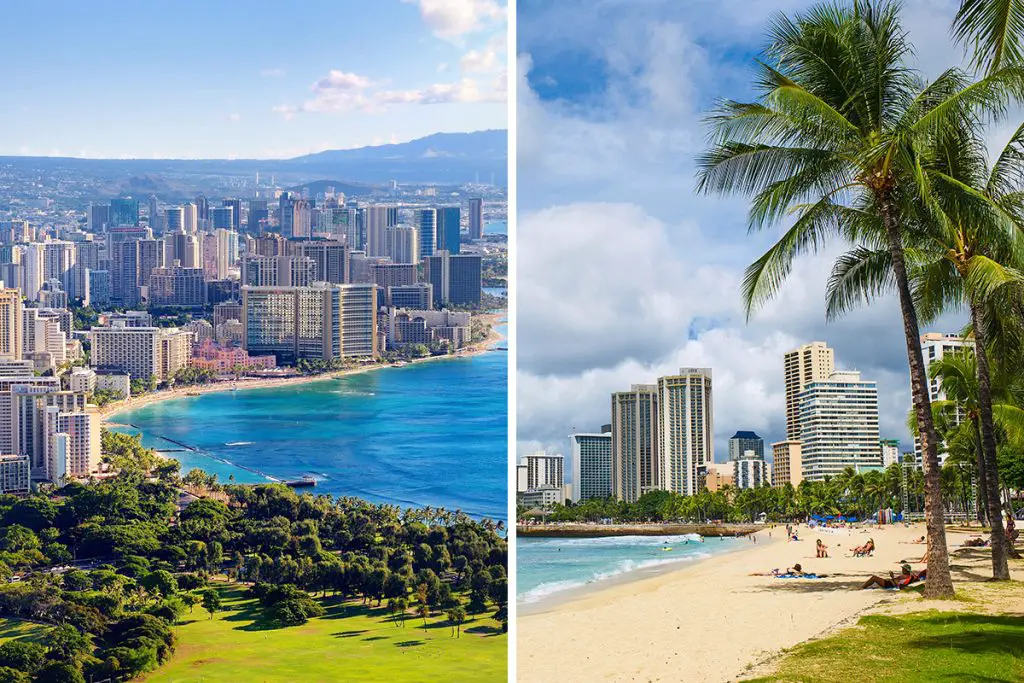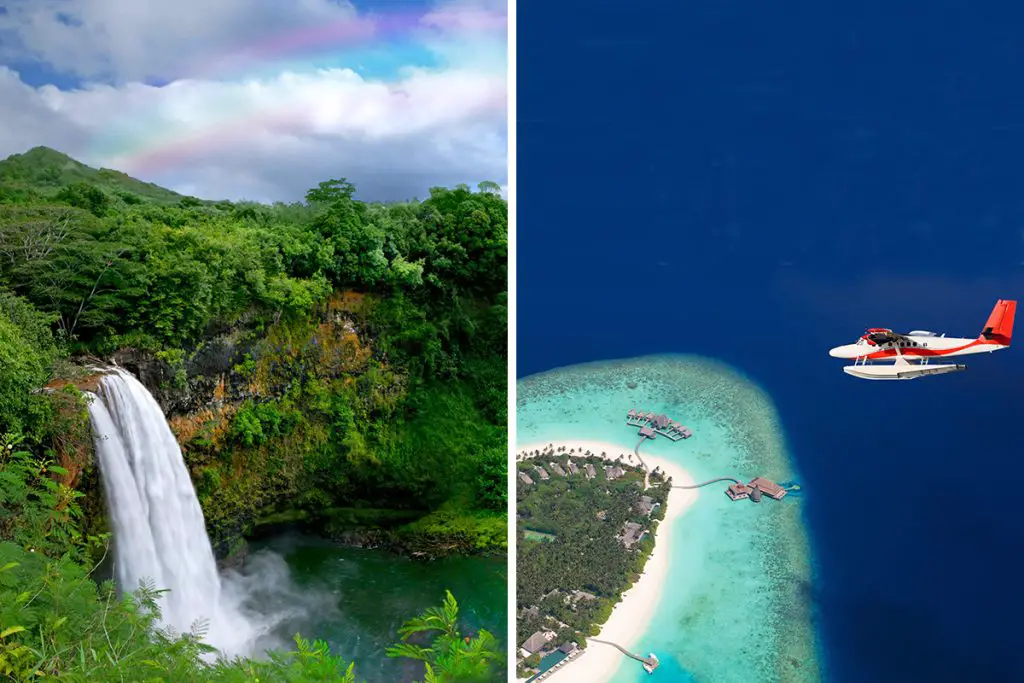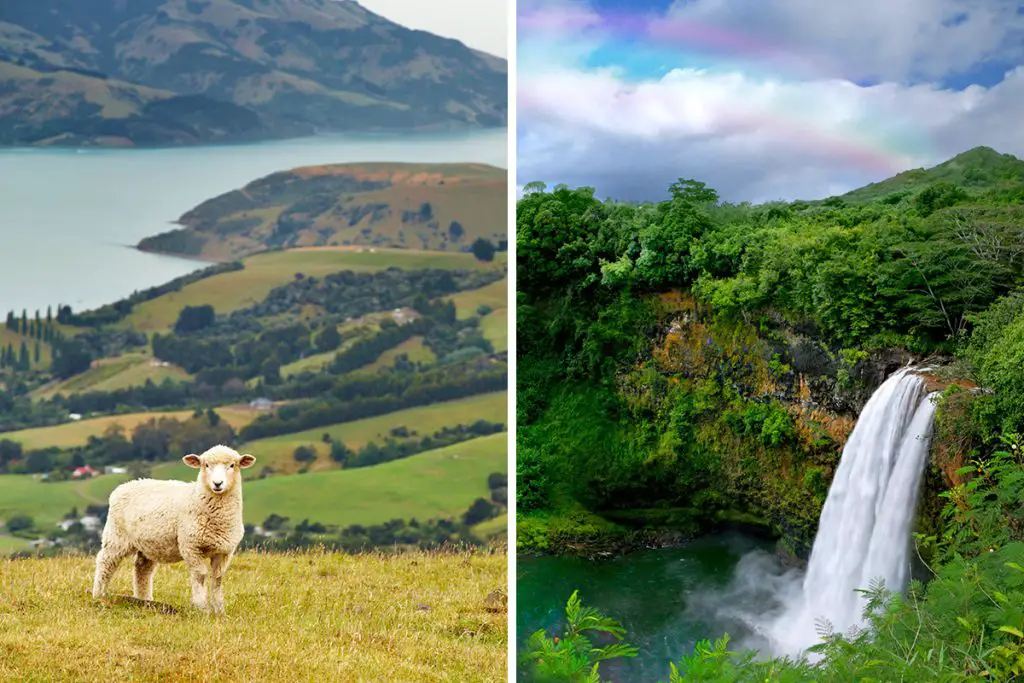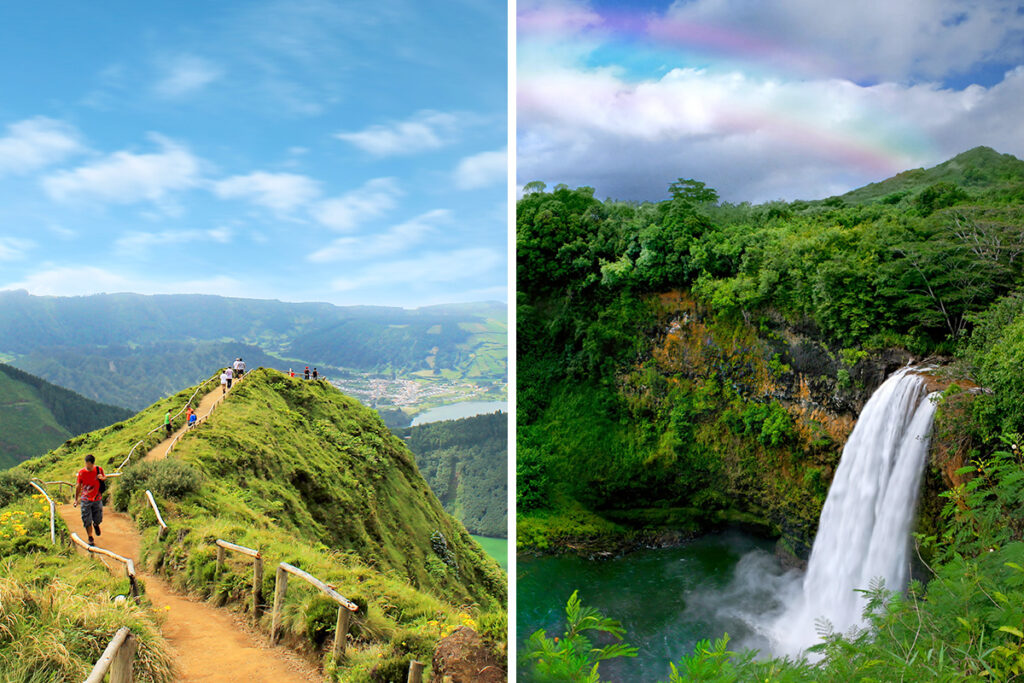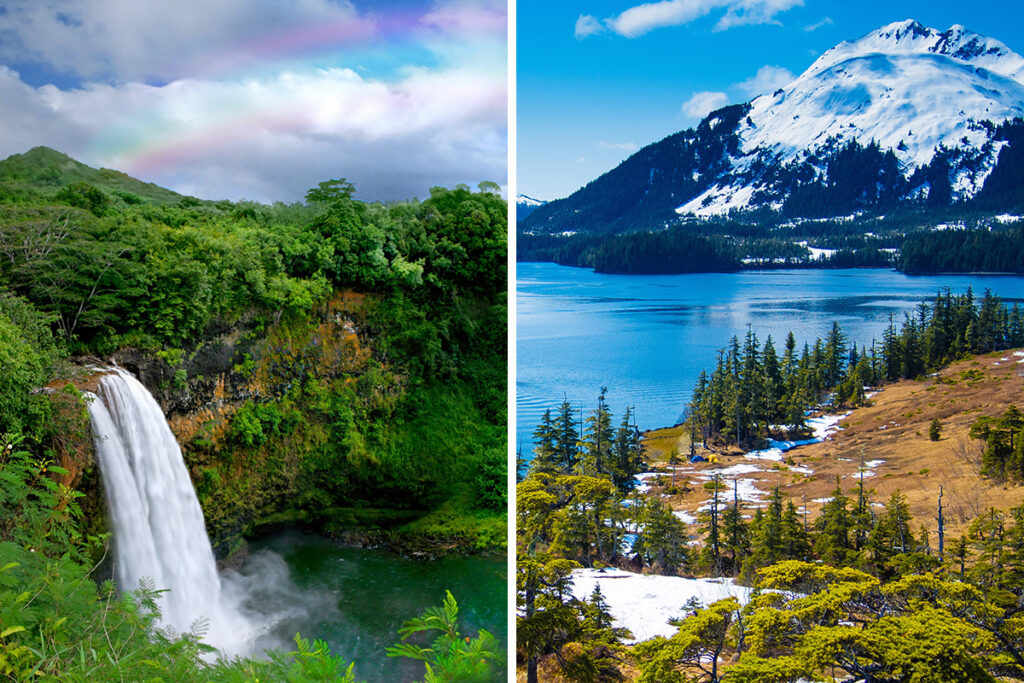Stepping into Hawaii, you’ll immediately sense the vibrant fusion of old and new, of tradition and innovation. From the hustle and bustle of Honolulu to the sprawling natural vistas of Big Island, each destination has its unique charm. Keep reading to uncover the historical and cultural wonders that make these two locations distinctly appealing.
History & Culture
Starting off, it’s crucial to understand the historic roots that shape the distinct character of each destination. Both Honolulu and Big Island have rich histories that shape their present and future, yet they showcase it in different ways.
Honolulu, the capital city of Hawaii, is a melting pot of cultures. Once the seat of the Hawaiian monarchy, it became a hub of economic activity with the arrival of immigrants from different corners of the globe.
This cultural blend manifests in the city’s architectural styles, local customs, and public celebrations. From the historic Iolani Palace to the vibrant Chinatown, Honolulu offers a metropolitan experience deeply intertwined with its past.
On the flip side, Big Island, also known as Hawaii Island, presents a different perspective of history and culture. Being the youngest yet largest island in the Hawaiian chain, it’s the very spot where Polynesians first landed centuries ago.
Here, you can feel the living heartbeat of ancient Hawaii. Through traditional hula performances, storytelling, and petroglyphs carved into lava rocks, Big Island residents keep their heritage alive and thriving.
Despite these distinctions, both Honolulu and Big Island share an underpinning of Hawaiian culture, evidenced by the widely spoken Hawaiian language and the enduring spirit of ‘Aloha’. The ‘Aloha Spirit’ is a way of life that emphasizes love, peace, and compassion, deeply ingrained in the people, whether you’re in the bustling city or the expansive countryside.
In summary, whether you’re drawn to the cultural fusion of a bustling city or the vivid storytelling of a tranquil island, both Honolulu and Big Island offer an immersive journey into Hawaii’s rich history and enduring culture. Your choice, then, depends on which form of this cultural experience resonates most with you.
Attractions & Activities
Exploring a new destination isn’t just about seeing new places; it’s about engaging in unique experiences. Honolulu and Big Island offer a range of attractions and activities that can make your trip unforgettable. Let’s delve into what each place has to offer.
Honolulu, being the bustling capital, is rife with attractions that cater to every interest. If you’re a history buff, the Pearl Harbor National Memorial, about 11 miles (18 kilometers) from downtown, is a must-visit. It’s an evocative monument to World War II history, creating a vivid picture of a defining moment in U.S. history.
For nature lovers, the Diamond Head State Monument offers a challenging hike up an extinct volcanic crater, rewarding climbers with panoramic city and ocean views.
Big Island, in contrast, offers a different set of attractions and activities, revolving largely around its diverse natural beauty. Volcanoes National Park is a key highlight. You can trek across hardened lava fields and observe active volcanic landscapes, truly a once-in-a-lifetime experience.
For the stargazers, Mauna Kea, a dormant volcano, hosts one of the world’s premier astronomical research sites. The summit offers breathtaking views of the night sky, a dream for amateur astronomers and casual viewers alike.
Of course, both places provide opportunities to immerse in local culture. In Honolulu, art enthusiasts can visit the Honolulu Museum of Art to explore more than 50,000 works from around the world.
Meanwhile, on Big Island, you can visit Pu’uhonua O Honaunau National Historical Park, a preserved ancient Hawaiian area that offers a glimpse into traditional Hawaiian culture and history.
In essence, both Honolulu and Big Island present a wealth of attractions and activities to enjoy. Your choice depends on whether you prefer a city’s eclectic offerings or a serene island’s natural splendor and cultural depth.
Beaches
When you think of Hawaii, it’s hard not to imagine the clear blue waters and soft, sandy beaches. Both Honolulu and Big Island offer unique beach experiences to satisfy your coastal cravings. Let’s compare their beach offerings.
In Honolulu, you’ll find Waikiki Beach, an iconic spot that stretches over 2 miles (3.2 kilometers). This beach, fringed by palm trees and high-rise hotels, offers calm waters perfect for swimming and surfing, especially for beginners. Another must-see is Ala Moana Beach, roughly 0.5 miles (0.8 kilometers) long, known for its calm waters and breathtaking sunsets.
On Big Island, you’ll discover a whole new world of beaches.
One of the most unique is Punalu’u Black Sand Beach, which is exactly what it sounds like – a beach with black sand, created by volcanic activity. This beach, about 55 miles (88.5 kilometers) from Kailua-Kona, is not only visually striking but also a frequent resting spot for endangered green sea turtles.
Then there’s Hapuna Beach, an expansive white-sand beach known for its clear waters and ample space.
While both destinations offer beautiful beach experiences, the types of beaches differ. Honolulu’s beaches are generally bustling and activity-packed, while those on Big Island are varied, offering unique experiences from black sand to turtle spotting.
In summary, whether you’re looking for busy beach vibes in a vibrant city or diverse beach landscapes in a serene island setting, both Honolulu and Big Island offer fantastic beach experiences. The choice boils down to your personal beach preferences.
Eating, Drinking & Nightlife
One of the greatest pleasures of traveling is indulging in local cuisine, savoring local beverages, and experiencing the nightlife. In this aspect, both Honolulu and Big Island shine with unique offerings. Let’s discover what awaits your palate and your party spirit.
Honolulu is a gastronomic paradise. From fine dining to food trucks, the city caters to every taste. A must-try is poke, a classic Hawaiian dish featuring raw, marinated fish. You’ll also find a range of international cuisine due to Honolulu’s multicultural roots.
For drinks, Honolulu has a thriving craft beer scene. Visit one of the local breweries, like Honolulu Beerworks or Waikiki Brewing Company, to taste beers with a tropical twist.
When it comes to nightlife, Honolulu comes alive. From lively beach bars to chic downtown clubs, the city offers a vibrant nightlife. Waikiki, in particular, is the heart of Honolulu’s night scene with live music and hula performances.
On the other hand, Big Island offers a unique culinary experience. Local specialties like laulau (pork wrapped in taro leaf) and loco moco (rice topped with a hamburger patty, a fried egg, and gravy) are must-tries.
For drinks, Big Island is known for Kona coffee and also offers local brews. Kona Brewing Company is a favorite among locals and tourists for its creative, island-inspired beers.
Nightlife on Big Island is more low-key compared to Honolulu. You might find a few local bars or pubs, often featuring live music, but the pace is more relaxed, reflecting the island’s overall vibe.
To sum up, whether you want a diverse culinary adventure and vibrant nightlife in a city or prefer to enjoy traditional dishes, local brews, and relaxed evenings on an island, both Honolulu and Big Island deliver in their unique ways.
Shopping
Whether you’re hunting for souvenirs or looking for local crafts, shopping is a key part of the travel experience. Let’s see how Honolulu and Big Island compare in this area.
Honolulu offers a shopper’s paradise with a variety of options. Ala Moana Center, the world’s largest open-air shopping center, is home to over 350 stores ranging from high-end designer brands to local boutiques. For local products and souvenirs, head to the Aloha Stadium Swap Meet and Marketplace, where you’ll find a wide range of Hawaiian crafts, jewelry, and more.
On the other hand, Big Island presents a unique shopping experience. You won’t find large malls here, but instead, charming small-town shops and markets. In Hilo, you’ll find the Hilo Farmers Market, offering local produce, crafts, and tropical flowers. Kailua Village, on the other hand, hosts numerous boutiques selling island-inspired clothing, art, and jewelry.
To conclude, both Honolulu and Big Island offer engaging shopping experiences. Honolulu provides a mix of upscale retail therapy and local markets, while Big Island charms with its local markets and small-town boutiques. Your choice depends on whether you prefer the bustling retail environment of a city or the quaint shops of a tranquil island.
Accommodation
Finding the right place to rest your head after a day of adventure is important. Honolulu and Big Island offer a range of accommodations, catering to different needs and budgets. Let’s look at what each destination has in store for you.
Honolulu, being a bustling city, boasts an impressive array of accommodations. High-end resorts and hotels line the shores of Waikiki, offering luxurious stays with beachfront views. For those seeking a more budget-friendly option, there are plenty of vacation rentals and hostels that provide comfortable accommodations without breaking the bank.
On Big Island, the accommodation options are as diverse as the island itself. You’ll find luxury resorts in areas like Waikoloa and Hualalai. There are also many vacation rentals, perfect for families or groups. For those craving a more unique experience, Big Island offers accommodations like charming bed and breakfasts and even eco-lodges.
In a nutshell, whether you prefer the luxury and convenience of a city hotel, or the charm and serenity of an island resort or vacation rental, both Honolulu and Big Island have plenty to offer.
Family-Friendliness & Children’s Activities
Traveling with family and finding engaging activities for kids is a crucial part of planning a trip. Let’s explore how Honolulu and Big Island cater to families and children.
Honolulu offers a variety of family-friendly attractions and activities. The Honolulu Zoo and Waikiki Aquarium are great places for children to learn about local and exotic wildlife. For a fun-filled day, families can also head to Wet’n’Wild Hawaii, a water park offering slides and pools suitable for all ages.
Big Island, on the other hand, provides a different set of kid-friendly experiences, centered around its natural wonders. Kids will love visiting the Volcanoes National Park, where they can learn about volcanoes and even see lava fields. Additionally, the Pu’uhonua O Honaunau National Historical Park offers interactive ways for kids to learn about ancient Hawaiian culture.
In summary, both Honolulu and Big Island have a lot to offer for families. Whether your family prefers the excitement of city attractions or the educational adventures offered by nature, both destinations are equipped to make your family trip memorable.
Getting There & Getting Around
Planning your journey is an integral part of your trip. Here’s how you can reach and traverse both Honolulu and Big Island.
Reaching Honolulu is quite straightforward. Daniel K. Inouye International Airport, located just 5 miles (8 kilometers) from downtown Honolulu, is Hawaii’s largest airport and welcomes direct flights from numerous global destinations.
To reach Big Island, you can fly into either Hilo International Airport or Kona International Airport. These airports are about 60 miles (96.5 kilometers) apart, and your choice depends on your itinerary.
Once in Honolulu, getting around is relatively easy. TheBus, Honolulu’s public transportation system, is efficient and covers a large part of the city. For more convenience, there are plenty of taxis and rideshares available. Alternatively, you can rent a car if you plan to explore beyond the city limits.
On Big Island, a car rental is almost a necessity due to the island’s size and the distance between attractions. Public transportation options are limited, and attractions are spread out.
In conclusion, both Honolulu and Big Island are well connected by air, but moving around varies, with public transport readily available in Honolulu, while a rental car is more suitable for Big Island. Your transportation choice would depend on your itinerary and preferences.
Weather
Weather is a vital factor to consider when planning your trip. Let’s compare the climate of Honolulu and Big Island.
Honolulu enjoys a tropical climate. It’s warm and sunny most of the year. The average high in summer (June to August) is about 88°F (31°C), while winter (December to February) sees an average high of 80°F (27°C). While there is some rainfall, it’s usually short and intense rather than prolonged.
In contrast, Big Island’s weather can be quite diverse due to its varied landscape. Coastal areas share a similar climate to Honolulu, while higher elevations are cooler. The west side of the island tends to be drier, while the east is more humid and rainy. Summer temperatures can go up to 86°F (30°C), and winter averages are around 79°F (26°C).
To sum up, both Honolulu and Big Island offer warm, tropical weather year-round. While Honolulu is generally sunnier, Big Island provides a mix of climates due to its unique geography.
Safety
When you travel, safety is paramount. Let’s examine the safety aspects of both Honolulu and Big Island.
Honolulu, as a major city, has areas where it’s advisable to take usual city precautions. However, it’s generally safe, especially in tourist areas. It’s wise to stay alert, keep valuables out of sight, and avoid walking alone at night in less busy areas.
Big Island, being more rural, experiences lower crime rates. However, nature poses its own challenges. If you’re exploring volcanic areas or hiking, be sure to stick to marked trails and heed safety warnings.
In terms of unique safety topics, it’s worth noting that both destinations experience occasional volcanic activity. Also, rip currents can be a concern when swimming or surfing, so always pay attention to posted signs and warnings on beaches.
In summary, both Honolulu and Big Island are relatively safe destinations, with risks more related to natural hazards than crime. As always, being aware of your surroundings and heeding local advice will contribute to a safe visit.
Cost
Budgeting for your trip is a crucial part of travel planning. Here’s a comparison of the costs you can expect in Honolulu and Big Island.
In general, Honolulu, as a bustling city, can be a bit more expensive. The average cost for a meal at a mid-range restaurant might be around $20-30 (same in USD as Hawaii uses USD), while a night at a three-star hotel can cost around $200.
Big Island, on the other hand, offers a range of options that can fit various budgets. Meals can range from $15 at local food spots to over $30 at more upscale establishments. Accommodation costs can vary widely too, with a night at a mid-range hotel typically costing around $150.
Transportation costs also differ. In Honolulu, a one-way ticket on public transport costs about $2.75, while renting a car on Big Island can be around $40 per day.
In conclusion, while both Honolulu and Big Island offer a range of price points, the cost of living in Honolulu tends to be higher. Your budget would depend on your personal preferences, such as dining options and choice of accommodations.
Which Is Better – Honolulu or Big Island?
Choosing between Honolulu and Big Island can feel like a tough decision, each offering a unique slice of Hawaiian charm. After comparing their key features, your choice becomes more of a matter of personal preference and what you hope to get from your Hawaiian adventure.
In terms of history and culture, both Honolulu and Big Island stand tall, teeming with rich historical sites and vibrant cultural scenes. Honolulu is the place to be if you enjoy soaking up history amid the buzz of city life.
Big Island, with its slower pace and vast landscapes, offers a more laid-back cultural immersion, giving you a chance to connect more deeply with the land and the Hawaiian spirit.
When it comes to attractions and activities, both islands are brimming with exciting opportunities. Honolulu, with its iconic landmarks and museums, delivers a lively city experience. Big Island’s attractions lean more towards the great outdoors, offering hiking, volcano exploration, and stargazing.
Beach lovers are in for a treat on both islands. Honolulu boasts some of the most famous beaches, like Waikiki, which are perfect for sunbathing and water sports. Big Island, however, entices with a more diverse beach palette, including white, black, and even green-sand beaches.
The nightlife, eating, and drinking scenes in Honolulu are more bustling, with a plethora of restaurants, bars, and clubs to suit all tastes. Big Island, while quieter, offers unique culinary experiences and local breweries that provide an authentic taste of Hawaii.
Shopping is a pleasure in both locations. Honolulu offers high-end shopping districts like Ala Moana, while Big Island charms with its local markets and unique crafts. For accommodation, both locations offer a range of options from budget to luxury. But remember, Honolulu can be a bit more expensive.
In terms of family-friendliness and activities for children, both Honolulu and Big Island offer a range of options that can keep the little ones entertained. However, the choice between a city vibe (Honolulu) or a more nature-centered experience (Big Island) would depend on what your family prefers.
When considering ease of travel and getting around, Honolulu, being a city, has more public transport options. Big Island, being larger and more spread out, is best explored by rental car.
Weather is consistently tropical and warm in both locations, with Honolulu being slightly hotter. Both are relatively safe, with the main risks being natural rather than crime-related. Cost-wise, while both can cater to various budgets, Honolulu tends to be a bit pricier than Big Island.
So, if you prefer city life with a buzzing nightlife, shopping, and a host of attractions at your doorstep, Honolulu is your go-to. If you are a nature enthusiast who enjoys quieter surroundings, varied landscapes, and outdoor adventures, Big Island is calling your name. Ultimately, both Honolulu and Big Island provide unforgettable experiences, and the decision comes down to the type of Hawaiian adventure you desire.

